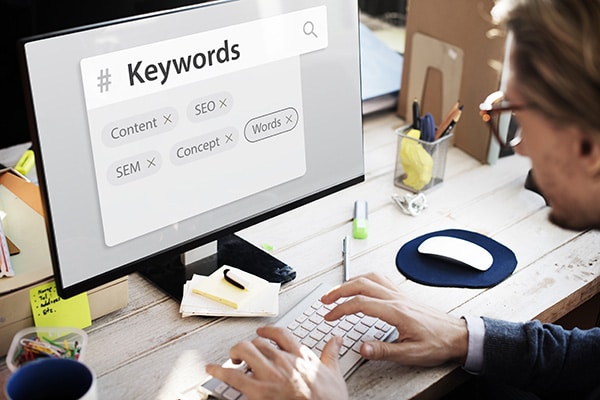Visual and interactive content is perfectly admirable for getting increased user attention and responsiveness on your website. Web content nowadays, is highly dependent on infographics, as they have turned out to be great in presenting and sharing any concept in a visually engaging and informative manner. But, one of the greatest challenges of this time is that the target audient of this content easily finds it when desired.
This is where the principles of search engine optimization come into the play, in order to ensure that your visual content is understandable, searchable and indexable by the search engine. But, a matter of concern here is that the search engines are incapable of reading and understanding the information provided within the image because the optimization principles for visual content are slightly different from that of descriptive data. However, they are not that difficult to learn. For your convenience, we have listed here some of the very useful tips, that will surely help you optimize your visual content in the best way possible.
Optimize Around a Keyword

Like any other content type, the visual content also needs to be optimized around a keyword phrase or a keyword. This simply means adding the related terms or keywords within the characteristic description of the graphical post, so that it becomes easier for the search engine to understand, search and index it. Never forget to use the similar related terms and keywords in the title description, meta description (not more than 160) and URL of the visual content post. Also, do not forget to add the word ‘infographic’ at the end of your title post, even if you are required to write it in parentheses. For example:
- Visual Post Title: “Most Productive Mobile Applications of 2018 (Infographic)”
- URL: https://example.com/most-productive-mobile-applications-of-2018-infographic
- Meta Description: “There are several productive mobile applications. Our infographic lists down the 8 most productive mobile applications of 2018.”
In the above example, the related terms used for optimization are, ‘most productive mobile applications of 2018’, that are used similarly at all the three places i.e. visual post title, meta description and URL.
Use Alt Text and Appropriate Filenames

Another important factor to bear in mind is that the search engines do not look for the visuals themselves while crawling through web pages for a particular search; rather they try to find the alt attributes and filenames. Filenames chosen need to be relevant and short. They must not be stuffed with keywords. For instance, you can name the file as most-productive-mobile-applications-of-2018-infographic.jpg. On the other hand, the alt attribute is basically an element description e.g. infographic, image, etc. that is used a particular element can’t be loaded. Alt text is also used by search engines to comprehend the image content. Just like the filenames, the description must also deliver the message related to image; and must also include keywords.
Produce Infographics That Are Mobile Friendly

At present, people are heavily reliant on mobile devices for browsing. This is the reason that makes search engines to start taking mobile optimization more seriously. Currently, web pages that are friendlier to mobile searches are ranked higher by the search engines. While the image content is irresponsive, there are a number of things that can help you make your visual content increasingly readable for your mobile users.
- Instead of detailed text, try focusing more on the central points.
- Split up your visual content into the content section or subheading, just like we split this blog post into different headings.
- Maintain the graphics’ width lower than 640px, so that the mobile users do not need to scroll through.
Use the Right Compression Technique

Image compression is a common practice when it comes to uploading the visual content on a website. However, it is really important to choose the right compression technique, as it tends to impact the entire user experience considering the end use of the content. The two most common compression techniques in use are Lossless Compression and Lossy Compression. Lossy compression technique eliminates pixel data where the surrounding pixel composition is similar or the same. This data usually remains unnoticed unless the graphic is zoomed in to a definite extent. On the contrary, the lossless compression simply compresses the visual content as it is; consequently, the compression rate is slightly lower than the lossy compression. Since it does not eliminate any pixel data; the graphics remain more detailed and crisp, even if they are zoomed in. In a recent survey, several SEO services in UK endorsed that the best-suited image compression technique for textual and simple websites such blogging website, a government website, etc. is lossy compression, as these websites do not heavily rely on visual content itself. However, if the website focuses more on graphical content such as e-commerce, social media and travel sites, etc.; then the images must be compressed using lossless compressions because this will help you in keeping your visuals clear and sharp even when they will be enlarged. A blend of both techniques can also be used if needed, to get a sharper image with a higher rate of compression.
Remove All the Excess Data

Usually, when graphical content is developed or an image is taken, a whole pack of data comes along with it. This supplementary data is referred to as the metadata and it mainly involves information like camera model, geolocation, shutter speed, ISO, aperture etc. All these statistics add extra weight to the image and mostly found completely unnecessary. Therefore, according to the best SEO company UK, these metadata packets should be removed before uploading the visual content to the website, in order to ensure better effectiveness and search engine optimization.
Conclusion:
It takes a lot of time and effort to create an image or infographic, and thus compromising its optimization for any sake is meaningless. We have tried covering all the significant factors that could assist you in overcoming all the hurdles that come across your way to visual content’s optimization process. We believe that with these tips you will surely be able to get your visual content efficiently optimized.

